
 Declan Schroeder
The Hockey Writers
Declan Schroeder
The Hockey Writers
39
Reads
0
Comments
Best & Worst Trades in Winnipeg Jets’ History
The Winnipeg Jets, both 1.0 and current versions, have made plenty of trades. Some were downright steals, while others were total flops.
Here’s a look at some of both categories, in chronological order.
Trades the Jets Won
Acquiring Big-Time Blue-Liner Carlyle — March 5, 1984
Late in the 1983-84 season, the Jets acquired undersized but offensively adept defenseman Randy Carlyle, who had recorded as many as 83 points in a single season.
In return, the Penguins received a 1984 first-round pick they used to select Doug Bodger and future considerations that turned out to Moe Mantha. Those players weren’t busts at all as both played four-plus seasons in Pittsburgh and were good contributors there.
However, it’s clear the Jets got the better end of the deal as the trade led to a fruitful relationship with Carlyle that spanned two decades. Carlyle spent the rest of his playing career with the Jets as a cornerstone blueliner, suiting up for 564 games over 10 seasons and recording 80 goals and 226 assists for 306 points (and racking up 736 penalty minutes to boot.)
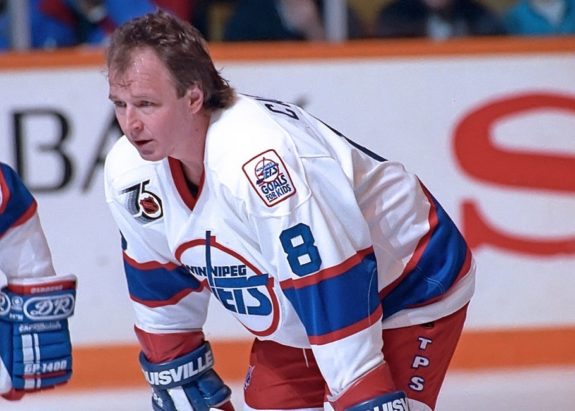
Carlyle served as an alternate captain between 1987–89 before wearing the C for the 1989-90 and 1990-91 seasons.
After his retirement in 1993, Carlyle took the first steps of his coaching career — one that reached nearly 1000 NHL games between 2006-2019 and saw him capture a Stanley Cup with the Anaheim Ducks in 2007 — as a Jets assistant in 1995-96.
After the Jets departed for Phoenix, Carlyle signed on as as the assistant coach of the IHL’s Manitoba Moose but took over as bench boss midway into their first season. He served as the head coach until 2001 and under his leadership, the team recorded a winning record and qualified for the playoffs every season.
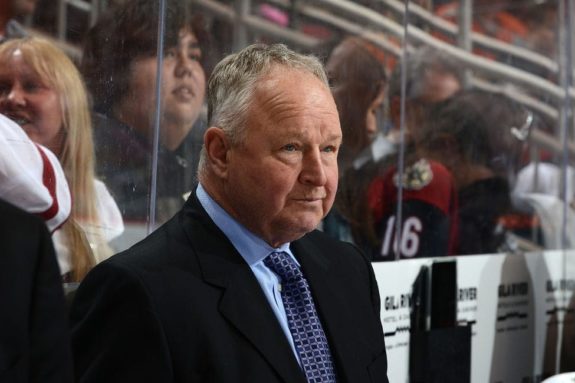
Carlyle returned to coach the Moose, now a member of the AHL, in 2004-2005. That season, the Moose captured a 44-26-3-7 record and advanced to the third round of the Calder Cup Playoffs.
Carlyle was inducted into the Jets’ Hockey Hall of Fame in February.
Removing Locker-Room Cancer Kane — Feb. 11, 2015
Evander Kane was a young sniper with a lot of promise, but was a disaster off the ice during his three-and-a-half seasons with the Jets. He engaged in a variety of antics — from the Twitter post he made flashing fat stacks on a Las Vegas balcony to allegedly dining and dashing at fancy restaurants — that overshadowed his on-ice contributions.
The final straw came when Kane showed up to the rink in a track suit rather than an actual suit, leading Dustin Byfuglien to throw the forward’s clothes into a shower.
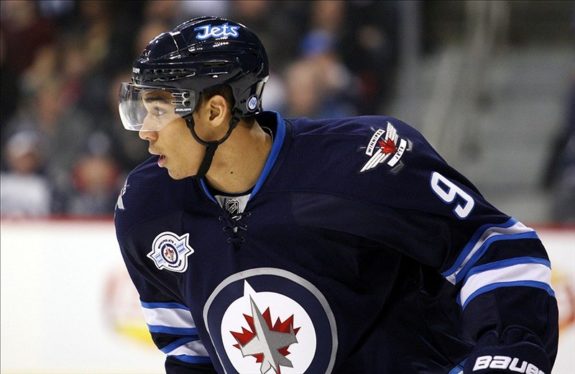
It was clear the arrogant Kane was more trouble than he was worth and a week after the incident, the Jets sent him to the Buffalo Sabres along with Zach Bogosian for Joel Armia, Brenden Lemieux, Tyler Myers, Drew Stafford, and a 2015 first-round pick they used to select Jack Roslovic.
Five years later, it’s clear the Jets won this one. Kane only spent three seasons with the Sabres, never recording more than 43 points in a season, before being traded to the San Jose Sharks. Bogosian spent six seasons with the Sabres, but was oft-injured and never particularly effective.
Roslovic, the only man left standing in the trade, posted career highs in goals with 12 and assists with 17 this season and had his first real opportunity to be a top-six forward. He struggled at times in the role but has nonetheless been a decent contributor.

The hulking Myers spent five seasons patrolling the Jets blue line, suiting up for 270 games and recording 29 goals and 85 assists for 114 points while skating an average of 21:40 before signing as a free agent with the Vancouver Canucks last offseason. Stafford provided the Jets with some veteran presence through March 2017, at which point he was traded to the Boston Bruins and saw his career quickly wind down.
Armia never blossomed into the pure sniper he was purported to be, but was an important bottom-six possession-focused forward and penalty kill mainstay for the Jets over three seasons before being traded to the Montreal Canadiens in 2018.
Related: Armia Not As Advertised for the Winnipeg Jets, but That’s Alright
Lemieux, meanwhile, was not long for the Jets but provided them with some truculence before being sent to the New York Rangers as part of the Kevin Hayes trade at last season’s trade deadline.
Saying ‘Ciao’ to the Captain — Feb. 25, 2016
While what the Jets received in exchange for Andrew Ladd from the Chicago Blackhawks — Marko Dano and a 2016 first-rounder they used to select Logan Stanley — was nothing special, what trading the captain allowed them to do made them the winners here.
In 2016, feneral manager Kevin Cheveldayoff had to make a choice on who to re-sign to a long-term deal — Ladd or utterly unique x-factor d-man Dustin Byfuglien. The debate was fiery at the time, as many saw Ladd’s leadership skills and steady production as more valuable than Byfuglien’s innate ability to impact a game in a myriad of ways and physical prowess.
Cheveldayoff chose to put his eggs in the Byfuglien basket and sent Ladd to his old team, the Chicago Blackhawks. That was a good choice, as the blue-liner transformed from a liability with a penchant for questionable pinches to a stalwart defender.
Related: Ladd Trade Was, Is & Will Be Good for Jets
The relationship between Byfuglien and the Jets ended on a sour note after he decided last-minute he didn’t want to show up for camp last September and left an already-depleted Jets’ blue line in even direr of straits. Nonetheless, he was a massive contributor to the team’s success between the Ladd trade and last season, especially during their 2018 run to the Western Conference Final.
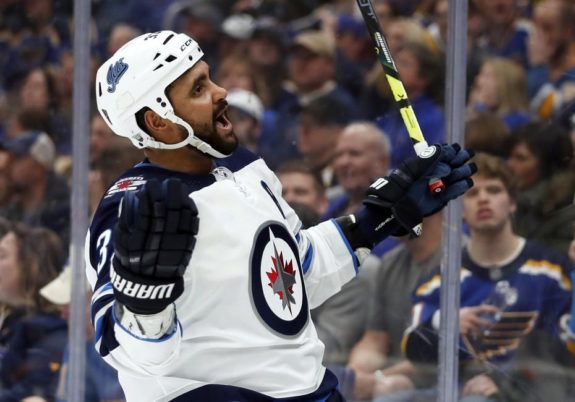
The season following the trade, Ladd signed a massive seven-year, $38.5 million contract with the New York Islanders that quickly became one of the NHL’s worst. The now 34-year-old has recorded just 72 points in 181 games as an Islander and has been hampered by a variety of injuries, most notably an ACL tear.
Adding Stastny for the Stretch Run — Feb. 26, 2018
By acquiring Paul Stastny prior to the 2018 NHL Trade Deadline, Cheveldayoff made a clear statement that he believed his team was finally a Stanley Cup contender.
To get the veteran playmaker from the St. Louis Blues, Cheveldayoff parted with prospect Erik Foley — and more notably — a valuable first-round pick for the first time. Stastny immediately improved the Jets’ fortunes up the middle and gave their already deep team a true, four-line attack.
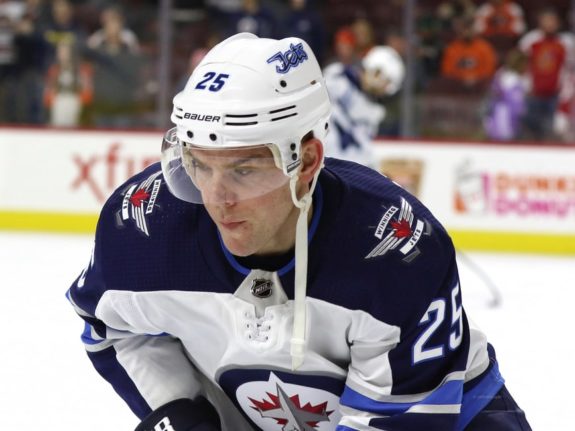
The centre found instant chemistry between exciting youngsters Nikolaj Ehlers and Patrik Laine, posting four goals and nine assists for 13 points in 19 regular season games and six goals and nine assists for 15 points in 17 playoff games. His most clutch performance came in Game 7 of the hard-fought series between the Jets and the Nashville Predators, where he scored two goals and added an assist in a 5-1 win.
Related: Paul Stastny: Deadline Deal of the Decade
While the Jets tried to re-sign Stastny after falling to the Vegas Golden Knights in six games, he ultimately inked a three-year, $19.5 million deal with that very team.
The Blues later flipped the Jets’ first-rounder — which ended up being 29th overall — along with a third-rounder to the Toronto Maple Leafs. The Leafs selected defenseman Rasmus Sandin with that pick.
In exchange, the Blues got the 25th overall pick and selected left-winger Dominik Bokk. Foley, meanwhile, suffered a concussion in a 2018 rookie tournament and has not played since. He failed his physical with the team last September.
Trades the Jets Lost
Dealing Christian to the Capitals — June 8, 1983
Dave Christian, chosen 40th overall in the Jets’ first NHL draft after they joined the NHL in 1979, played parts of four seasons with the team between 1979 and 1983. In his two full seasons, 1980-81 and 1981-82, the left-winger recorded 71 and 76 points, respectively.
There was was one problem, though: the Warroad, Minnesota native didn’t like playing in Canada. A United Press Institute article reported Christian was “whacked in the pocketbook by Canadian tax laws,” and “didn’t see a post-hockey future for himself in Winnipeg,”
I’ve been informed by his agent that he no longer wants to play in Winnipeg,” said Jets’ GM John Ferguson Sr. “I’ll try to trade him. He has played his last game for us.”
From ‘Christian has played last game for Jets,’ Winnipeg Free Press, June 8, 1983.
Ferguson did just that, sending Christian to the Washington Capitals. The UBI piece says he “jumped for glee” upon hearing the news.
In return for Christian, the Jets received a first-round draft pick, which they used to select d-man Bobby Dollas. Dollas only played 56 games for the Jets over three seasons, recording zero goals and five assists.
Christian, meanwhile, was a consistent contributor over six seasons in D.C., recording 193 goals and 224 assists for 417 points before playing stints with the Boston Bruins, Blues, and Chicago Blackhawks. He was inducted into the U.S. Hockey Hall of Fame in 2001.
Sending the Popular Babych Packing — Nov. 21, 1985
The moustachioed Dave Babych was an extremely popular player in the dressing room and among fans alike; a defenseman who was a cornerstone of the Jets’ early years and key contributor in their surge to respectability from laughing stock.
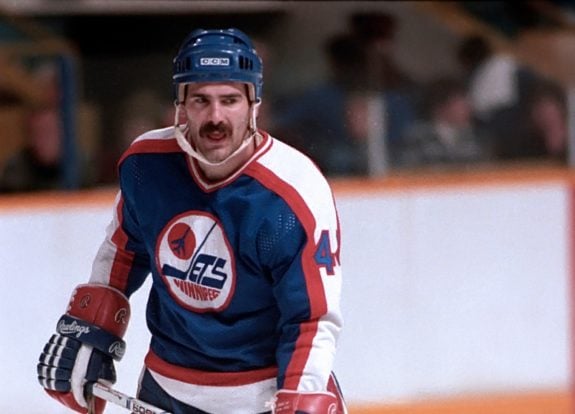
However, that didn’t stop John Ferguson Sr. — who felt Babych played too soft — from suddenly trading the star to the Hartford Whalers in exchange for Ray Neufeld, a Manitoban winger.
Related: Ones That Got Away: The Winnipeg Jets’ Dave Babych
Babych, who had racked up 73 goals and 248 assists for 321 points with the Jets since being drafted second overall in 1980, went on to enjoy a long and highly-productive career with the Hartford Whalers and Vancouver Canucks. By the time he’d played his final NHL game in 1999, he’d suited up for 1195 contests and put up 723 points.
Neufeld, meanwhile, played parts of four seasons for the Jets between 1985-89 and recorded 61 goals and 66 assists for 127 points in 249 games, but never had anywhere close to the impact Babych did in his early 80s campaigns in Winnipeg.
Parting Ways With the Finnish Flash — Feb. 7, 1996
This trade hurt the Phoenix Coyotes more than it hurt the Jets, but it was a bad trade nonetheless. By the time the Jets sent Finnish Flash Teemu Selanne — their best-ever first-round pick who just a few seasons earlier had shattered the rookie goal-scoring record by racking up 76 — to the Anahem Mighty Ducks, the writing was on the wall for the franchise.
Related: Winnipeg Jets’ 50-Goal Scorers
Due to Winnipeg’s stagnant economy, a declining Canadian dollar that left north-of-the-border teams at a competitive disadvantage, a crumbling arena sans luxury boxes, and inability to find a local buyer to invest in the team, relocation seemed imminent.
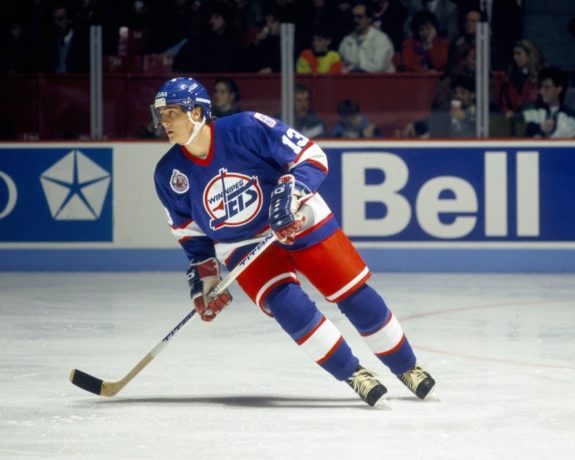
It was perhaps for those reasons the Jets sent Selanne to the Mighty Ducks in their final season for grinder Chad Kilger and defenseman Oleg Tverdovsky despite being in the playoff hunt.
Selanne, four times a 100-point player, went on play 1541 games and piled up 684 goals and 773 assists in an illustrious, decorated career.
Kilger recorded five points for the Jets down the stretch and played 10 games with the Coyotes in their inaugural season before moving on. Tverdovsky played for the Coyotes through 1998-99 but had his best three statistical seasons with the Mighty Ducks between 2000 and 2003.
Swinging a Trade for Setoguchi — July 5, 2013
It was the first deal Cheveldayoff made for an established player since the Jets relocated from Atlanta two seasons prior; most of his deals before then involved picks, prospects, or fringe players.
While sending a second rounder to the Minnesota Wild for Devin Setoguchi — who had recorded as many as 65 points in a single season — seemed like a move that would bolster the Jets’ fortunes at right wing.
Setoguchi came into camp in terrible shape and teammates had to cover for him during line drills because the then 27-year-old was physically incapable of doing them. Largely a disappointment, he recorded just 11 goals and 17 assists for 27 points and Jets let him walk at the end of the season.

A few years later, Setoguchi opened up about his profound alcohol and drug abuse problems that had followed him since juniors. While playing for the Jets and later, the Flames, he regularly abused Ambien, cocaine, and drank two bottles of Jameson Irish Whiskey per day.
“Setoguchi told The Hockey News he figures he missed three different team meetings because he was too smashed to make it in,” the Winnipeg Free Press’ Jason Bell wrote in 2016. “And he often went straight from the MTS Centre to a nearby bar owned by True North Sports and Entertainment.”
From ‘Former Jet who nearly killed his career with alcohol, drugs, is getting another shot at NHL,’ Winnipeg Free Press, Sept. 8, 2016.
Setoguchi entered rehab in 2015 and the Free Press article reported as of 2016, he was still clean. He later played a stint for the Los Angeles Kings before wrapping up his career in Germany with the Mannheim Eagles in 2017-18.
Trade Still Up in the Air
Swapping Trouba for Pionk — June 17, 2019
Quickly regarded as outright robbery for the New York Rangers last June, who won the Jacob Trouba for Neal Pionk trade isn’t so clear nearly a year later.
While many Jets fans took to social media to voice their anger about the perceived poor return for the top-pairing Trouba, they’re singing Pionk’s praises now as Jets have gotten the better end of the deal so far.
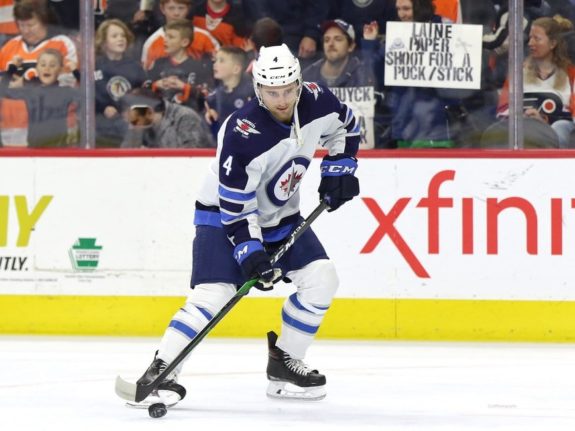
Pionk was a revelation in his first campaign in Winnipeg, greatly outpacing Trouba in nearly every meaningful statistical category, including assists, (39 to 20) points, (45 to 27) plus/minus, (10 to -12) time on ice, (23:23 to 22:24) Corsi, (51.4% to 44.8%) and Fenwick (50.2% to 45%.)
Related: 3 New Jets Who Surprised in 2019-20
It’s too early to declare the Jets the runaway winner, however. The Rangers signed Trouba to a seven-year deal in mid-July, hence he still has six seasons to make a bigger impression as a Blueshirt. Who truly won this trade will only be seen a few years down the road.
Do you agree with the author’s assessments? Which trade do you think was the best or the worst? Which other trades do you think are still up in the air? Comment below!
The post Best & Worst Trades in Winnipeg Jets’ History appeared first on The Hockey Writers.
Popular Articles

















































 Blackhawks Chicago
Blackhawks Chicago Panthers Florida
Panthers Florida Penguins Pittsburgh
Penguins Pittsburgh Rangers New York
Rangers New York Avalanche Colorado
Avalanche Colorado Kings Los Angeles
Kings Los Angeles Maple Leafs Toronto
Maple Leafs Toronto Bruins Boston
Bruins Boston Capitals Washington
Capitals Washington Flames Calgary
Flames Calgary Oilers Edmonton
Oilers Edmonton Golden Knights Vegas
Golden Knights Vegas Flyers Philadelphia
Flyers Philadelphia Senators Ottawa
Senators Ottawa Lightning Tampa Bay
Lightning Tampa Bay Islanders New York
Islanders New York Sabres Buffalo
Sabres Buffalo Red Wings Detroit
Red Wings Detroit Devils New Jersey
Devils New Jersey Hurricanes Carolina
Hurricanes Carolina Stars Dallas
Stars Dallas Jets Winnipeg
Jets Winnipeg Blue Jackets Columbus
Blue Jackets Columbus Predators Nashville
Predators Nashville Wild Minnesota
Wild Minnesota Blues St. Louis
Blues St. Louis Mammoth Utah
Mammoth Utah Sharks San Jose
Sharks San Jose Ducks Anaheim
Ducks Anaheim Canucks Vancouver
Canucks Vancouver






